:max_bytes(150000):strip_icc()/Health-7-pots-symptoms-7482383-Horiz-V1-a7eee85ef91d4fe69853d06fec9e886a.jpg)
Ever Stand Up and The Room Spun?
Okay, real talk—ever just stand up too quickly and suddenly wonder if gravity hit “hard mode”? Your heart’s thumping away, your legs wobble, maybe your head fills with static. You might laugh it off at first (“Haha, whoa, I need more coffee!”), but when it keeps happening, it’s a little less funny and a lot more confusing.
Guess what? You are miles from alone. There’s a name for this—Postural Orthostatic Tachycardia Syndrome (POTS). It’s a mouthful, but it basically means your body and gravity aren’t the best of friends. If you’ve ever found yourself googling “do i have pots test” at 2 a.m., you and I are already kindred spirits.
Could My Dizzy Episodes Be POTS?
Let’s cut through the noise—POTS is way more common than you’d guess, especially for women (yep, lucky us) in our teens through thirties. It sneaks up after illnesses, surgeries, even some intense stress. Most folks just write it off as “being out of shape” or “not sleeping enough.”
Here’s the zinger: It’s not about your heart being weak, or your brain not trying. It’s about the autonomic nervous system getting hiccupy, so blood just kind of chills in your legs when you stand. Your heart turbo-boosts, trying to get blood up to your brain. Hello, head rush and racing pulse (and sometimes, a totally dramatic faint).
But before you spiral—no, you’re not dramatic, lazy, or “too anxious.” POTS can make your daily rituals feel like Olympic sports. I mean, I legit missed a train once because standing still in line made me so woozy I had to sit down. Kind of funny in hindsight. Kind of … not.
Common Triggers and “Is It Just Me?” Moments
- Taking a hot shower and nearly needing a life alert button.
- Waiting forever in line at the grocery store (seriously, why is it always the slow line?).
- Getting out of bed too fast and needing to pop back down like a startled meerkat.
You’re not imagining stuff—you’re playing tug-of-war with your own nervous system. That’s why so many find validation in reading about do i have pots test experiences. Trust me, that first, “Oh, other people do this too?!” moment is huge.
Let’s Get Nerdy: Table Time
| After Standing (10 mins) | Normal Person | POTS Suspect |
|---|---|---|
| Heart Rate Bump | +10 to 20 bpm | +30 bpm (adults) or +40 (teens) |
| Blood Pressure Drop | Little to none | None or minimal |
| Symptoms? | Maybe light fizz | Dizzy, pounding pulse, foggy brain, potential faint |
Can I Test for POTS At Home?
This is probably the part you came for. And yes—you can start with a home test! (Please don’t go buying complicated gadgets or running off to Dr. Google just yet.) The POTS test at home is simple and, honestly, kind of enlightening.
How Does the At-Home “Stand Test” Work?
You’ve got this checklist?
- Lie down and rest for 10 minutes (Netflix makes this easier).
- Check and jot down your resting heart rate.
- Stand up—nice and still, no pacing. Set a timer for 10 minutes.
- Check your heart rate at minute 1, then minute 10, and notice how you feel.
If your heart rockets upward—by about 30 beats per minute for adults (or 40 if you’re a teen)—without a major blood pressure drop, it’s big “maybe” territory for POTS. Bonus points for classic symptoms like dizziness, blurry vision, brain fog, or feeling like you could nap standing up. Note: This isn’t a formal diagnosis, just a clue to take to a real-life doc.
I remember the first time I did the test—my partner watched me like a hawk, convinced I was about to face-plant. Spoiler: I didn’t faint. But my heart rate practically doubled, and that’s when it clicked. I wasn’t “just tired.”
For step-by-step safety, peek at this friendly do i have pots test walkthrough. Even if you just want validation, it’s worth your time.
Your Experience (Or, “Am I Nuts?”)
Quick story—Mike, a friend of mine, always skipped stairs at work, afraid he’d look “lazy.” Finally did a stand test at home. Heart rate jumped 40 bpm in under five minutes. Turned out, he had POTS. He’s still not a fan of escalators, but at least he knows he’s not lazy, he’s managing something real.
Honestly, it’s wild how many folks discover what’s up after reading a story like this. If this made a lightbulb flicker in your brain, a home check is an easy first step—not a substitute for a cardiologist, but a huge validation moment, right?
Wait—Is It More Than Just Dizzy Spells?
Here’s the weird part: POTS can be sneaky. Maybe you only get dizzy every so often, or you think brain fog is just stress. Truth is, it’s usually a bunch of things stacked together.
Spot the Symptom “Squad”
- Overwhelming fatigue—even after sleeping in on Sunday.
- Brain fog that makes your phone password feel impossible.
- Palpitations or “pounding” heart right after standing.
- Nausea, blurry vision, or even weird cold sweats.
I had a stretch last winter where I couldn’t finish a cup of tea sitting upright. Thought I had the world’s slowest flu, turns out it was my blood flow not quite getting to the right places (classic POTS!). Had I listened to my body sooner, maybe I’d have avoided a few awkward workplace moments …
Insert Story Here
Like Lisa’s story—she was convinced her post-yoga dizziness was bad balance until she checked her heart rate. Now she manages her POTS with salty snacks and yoga postures that don’t involve standing still too long. Inspiration? Absolutely.
If any of those rings true, seriously consider the POTS test at home. Knowledge is power.
When Is It Time to Actually See a Doctor?
Here’s the not-so-fun truth—you should rope in a medical pro if a home test points toward POTS, or if symptoms are cramping your day-to-day. Why? For starters, a dozen other things can look like POTS—like dehydration, anemia, or just being hangry. According to research on diagnosing and treating this dizzying syndrome by Harvard Health, a specialist can lock down what’s really going on and help create a plan that works for you.
What Actually Happens at the Doctor’s?
You might start with your regular doc, but eventually (especially if you bring your do i have pots test results), you’ll see a cardiologist or neurologist. They’ll ask loads of questions—about symptoms, history, even if you sweat weirdly or wake up to pee in the night. No shame. All part of the puzzle.
- Active Stand Test or NASA Lean Test (more formal than your living room version).
- Tilt Table Test: Imagine lying down, getting tilted upright while they track your heart—kind of like a medical amusement park ride (minus the fun colors).
- 24-hour heart and blood pressure monitors (don’t worry, you can shower with most).
- They may even rule out “mimic” conditions like thyroid problems or low red blood cells.
The “aha” moment? An adult whose heart rate jumps 30+ bpm or a teen’s jumps 40+ bpm within 10 minutes of standing (and stays up there), plus all the classic symptoms, usually lands a POTS diagnosis (more tips here for chatting with your doctor).
Story Pause: Why It Matters
A friend once brought a journal of stand test results to her doctor. The appointment went from “maybe it’s stress?” to “here’s a real plan” in ten minutes. Sure, the gear felt silly, but the validation? Unmatched.
Found Out It’s POTS? Here’s What Helps
Getting a diagnosis is half relief, half “now what?” The good news—lots of folks manage POTS and live full, awesome lives. The recipe isn’t magic, but it’s more hopeful than you might think.
- More salt. (Yes, you have official permission! Salt holds extra water in your bloodstream so you don’t “run dry” when you stand.)
- Stay hydrated. Don’t leave the house without your water bottle.
- Compression stockings. Super stylish, and they keep blood from pooling in your legs.
- Gentle exercise. Start slow (maybe a walk to the mailbox). It really does retrain your nervous system, as quirky as that sounds.
- Smaller, more frequent meals. Because big meals make symptoms worse for a lot of us.
Medications are a possibility for some, but most people improve with these behavioral tweaks (see what Harvard Health says). It’s not always a straight shot to feeling better, but every step counts.
And for the record…you’re allowed to have rough days. But try not to do it alone. There’s strength in community, whether it’s sharing your story in the break room or connecting with others who’ve taken the do i have pots test.
You Got This: Your Next Step
So…what does all this mean for you?
If you’re still with me, take that as your permission to listen to your body. If the dizzy spells, heart races, and crash-outs sound familiar, try a cautious POTS test at home. See where you land. Track your symptoms, keep notes, and bring them with you when you talk with a healthcare pro who understands dysautonomia. That’s cardio-nerd for “nervous system stuff,” by the way.
This isn’t just you being sensitive. It’s your body telling you it needs help. Making tiny changes—salty snacks, bigger water bottles, more rest—might change your daily life more than you expect. And if sharing your experience helps the next person listen to their heart (literally), that’s a win for all of us.
Seriously…you’re doing better than you think. If you’re reading this, you’re already advocating for yourself—so keep going. What’s one small step you’ll take this week? Tell someone what you’re learning, or just treat yourself to a pair of cozy compression socks. You got this!









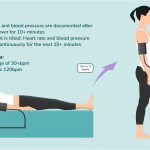


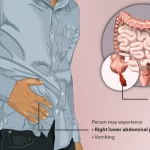
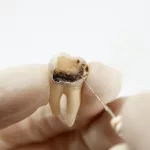
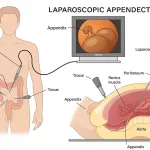
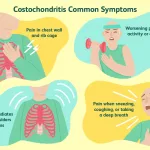


Leave a Reply
You must be logged in to post a comment.